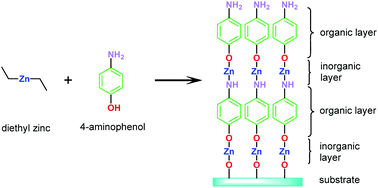ALD/MLD of novel layer-engineered Zn-based inorganic–organic hybrid thin films using heterobifunctional 4-aminophenol as an organic precursor
Abstract
Here we present novel hybrid inorganic–organic thin films of the (–Zn–O–C6H4–NH–)n type deposited in an atomic/molecular layer-by-layer manner through sequential gas–surface reactions of separately introduced inorganic (diethyl zinc) and organic (


 Please wait while we load your content...
Please wait while we load your content...